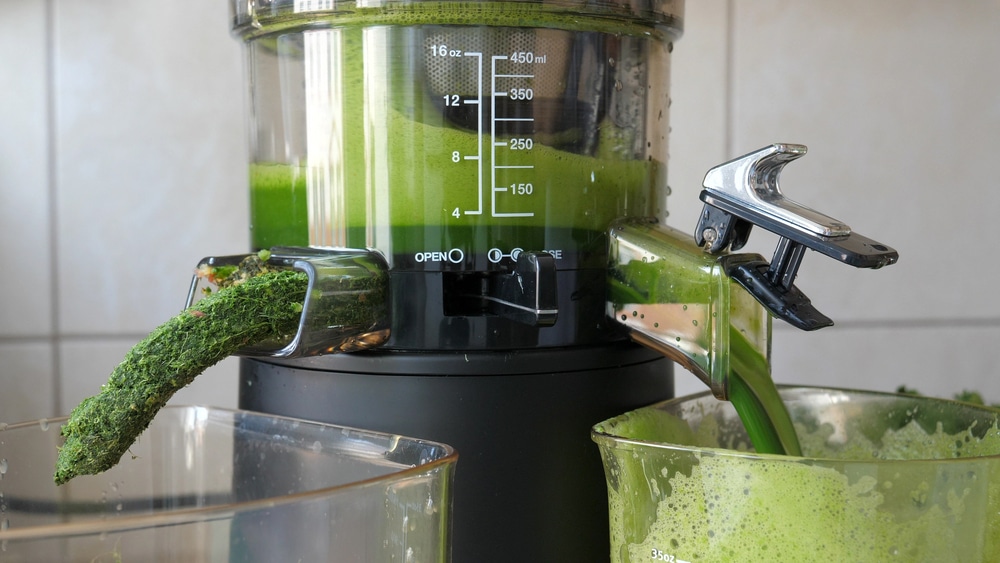Have you ever wondered what to do with juicer pulp?
If you’ve recently started juicing to bring more vitamins and minerals into your routine, you might have noticed that many fruits and veggies leave a great deal of pulp behind. Juice and veggie pulps might not look quite attractive at first glance, but they possess amazing benefits which you may not be aware of.
Experimenting with juicer pulp recipes could be an excellent way to transform your diet and bring more of the things you need. Not only do you get a health boost from carrot pulp or any vegetable pulp, but you also gain the satisfaction of knowing you’re not wasting anything.
How to Use Juicer Pulp
Your leftover juice pulp isn’t just the unwanted mess you get when you’re done mixing your favourite juice. The right fruit pulp and veggie pulp can also be wonderful sources of healthy nutrients and vitamins. Using your remaining pulp in a recipe for cream cheese, vegetable broth, or something else entirely could be a perfect way to enhance the time you spend in the kitchen.
Depending on your preferences, you can even just pop the fruit pulp straight back into your juice recipe. Apple pulp, lemon juice pulp, and the pulp from citrus fruits can really help add life and texture to fresh juice. Some of the top ways to use the pulp from your food processor or juicer include:
Making a Vegetable Broth
Veggie pulp is excellent for making veggie broth or a range of different soup recipes. To give the food more thickness and depth, you can add the vegetable pulp from your juice to your vegetable brother recipe. Alternatively, you can dry the pulp, freeze it, and turn it into a veggie stock.
Mix With Cream Cheese
The vegetable pulp is excellent for making a delicious topping for scrambled eggs, sweet potato, and other nutrient-filled breakfast ideas mixed with cheese. Remember, this pulp is chock full of nutritional value, so it can make a difference when included in creative ways as part of a healthy treat.
Add to Smoothies
While many people like their juice bar to be free from pulp, smoothies are much thicker than juice. When you add the pulp to your smoothie, you can bring new flavours to smoothies. Adding pulp to a smoothie means you get a better consistency and a hearty dose of fibre to improve your stomach health.
Add to Baked Goods
The pulp can be an excellent product to add to a baking session, along with extra spices and other products. You can make a quick bread recipe with vegetable pulp or use fruit pulp with muffins and cakes. Mixing pulp into your baked items will give them more flavour while simultaneously improving the health impact.
Make Ice Cubes or Popsicles

Aside from making homemade soups and smoothies with pulp, you can also get creative by making ice cubes and popsicles. In ice cube form, your juice pulp will give extra flavour to your daily dose of water. You can also use popsicle moulds to make unique smoothie-flavoured treats. Fruit pulp from juicing makes for an interesting texture as a popsicle, so it’s a great way to mix up your diet if you’re looking for something new.
Make Dip
If you want a fun way to spruce up your vegetables and celery sticks for a party, try making a pulp dip. All you need to do is add extra spices and a little Greek yoghurt, and you’ll have an amazing dip to capture the attention of any visitor. Serve your dip with carrots, celery, and even some of the crackers you make with your vegetable pulp.
Make Crackers
It might sound odd, but you can actually make your own vegetables into crackers when you mix the right pulp. Carrot juice and vegetables that work well with carrots will often produce some fantastic pulp for crackers. There are plenty of recipes out there to give you a great flavour, and you get the added benefit of a healthy treat when you’re feeling hungry.
Fruit Leather
One of the favourite recipes of many children, making fruit leather is an excellent idea if you have extra pulp leftover from your juice making. You simply line a cookie sheet with stick-proof paper and spread the pulp out over the sheet. You can place this product in a dehydrator or add it to your oven on the lowest setting to create a delicious batch of fruit leather. Cut the mix into strips when you’re done.
Clothing Dye
Your favourite recipe for juice pulp doesn’t have to relate exclusively to food items. If you like making your own clothes when you’re not juicing, you can also use the pulp to make dye. It might take a little while to transform your pulp into a dye you love, but most of the time, it involves simply placing the pulp with your clothing in a large pot of warm water and waiting for the dye to seep out.
Dog Treats
One of the most creative ways to use juice pulp is to make dog treats. As a pooch owner, the chances are you’re always looking for the next great idea for how to treat your dog. With vegetable pulp, you can make your own dog treats totally gluten-free or mix your pulp with things like rolled oats and peanut butter. Experiment with different recipes, and remember to store your treats in an airtight container afterwards.
Is It Healthy to Eat the Pulp From Juicing?
Although it might seem odd to place fruit pulp into ice cube trays or mix it with vanilla extract and maple syrup for your baked goods, it can actually be a wonderful way to make the most of your produce. Consuming pulp is excellent for your health, as a lot of the antioxidants and nutrients in fruits and vegetables live in the skin of your produce.
Whenever you make juice and remove the pulp, you’re also removing some of the benefits that fresh pulp has to offer. Using pulp to make all kinds of unique treats, like fruit tea and vegetable crackers, gives you access to those minerals and vitamins you’d otherwise miss out on.
When you use juice pulp to make additional foods to eat, you’re also going to get access to more fibre, which helps to improve your gut health.
Is Juice Pulp Good for Plants?
Leftover pulp from your juice is great for making juice pulp crackers or your favourite vegetable broth recipe. However, it’s not just good for humans. We’ve already mentioned how juicer pulp can benefit your pooch in the form of dog treats, but leftover pulp can also be an excellent way to improve the health of your garden soil. You can add juice pulp to your garden to help your plants and flowers grow throughout the year.
Making your own compost is becoming an increasingly popular pastime in all parts of the world. When you learn how to use your juicer pulp correctly, you can add it to the soil for your indoor and outdoor plants. Because the pulp decomposes quickly, it can deliver value very quickly, and you don’t need to know too much about gardening to get started.
Can You Put Pulp Back Through a Juicer?
One of the most common questions asked about juicer pulp is whether it’s possible to put it back through the juicer to extract more juice. Generally, a good juicer will remove all the juice from your produce the first time around. Adding about a cup of the pulp back to the mixer might get you a tiny amount of extra juice – but it’s unlikely you’ll get too much out of your pulp.
How Do You Use Your Juicer Pulp?
In general, that’s what to do with juicer pulp. It’s a better option to discover the health benefits of juicer pulp yourself by mixing carrot juice with your favourite spices to make crackers or other spices and herbs for a delicious soup. Alternatively, you can use your pulp to make treats for your furry friend, or you could even add certain kinds of pulp to olive oil and coconut oil to infuse them with flavour. The options are endless.
Let us know what you do with your juicer pulp!

